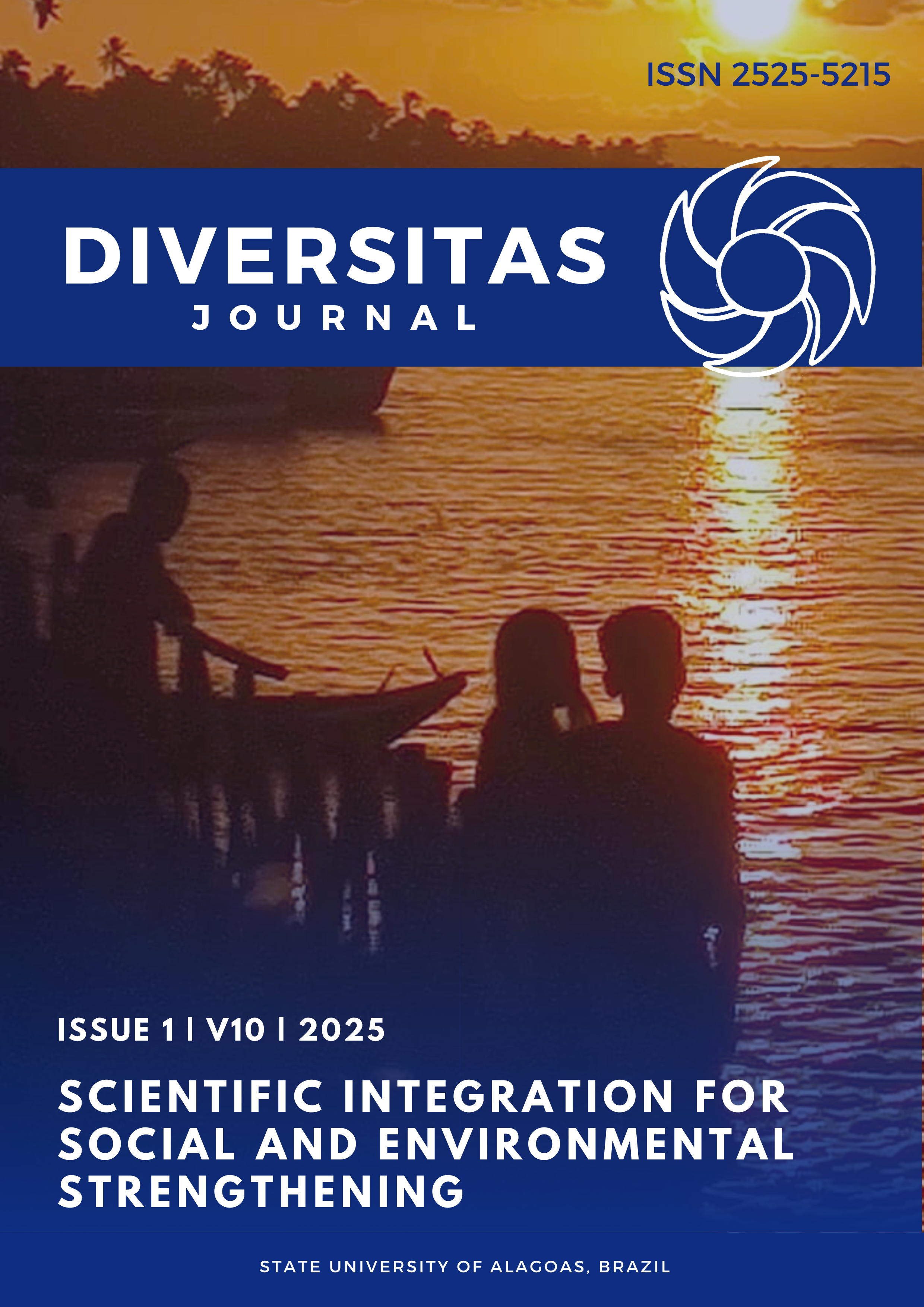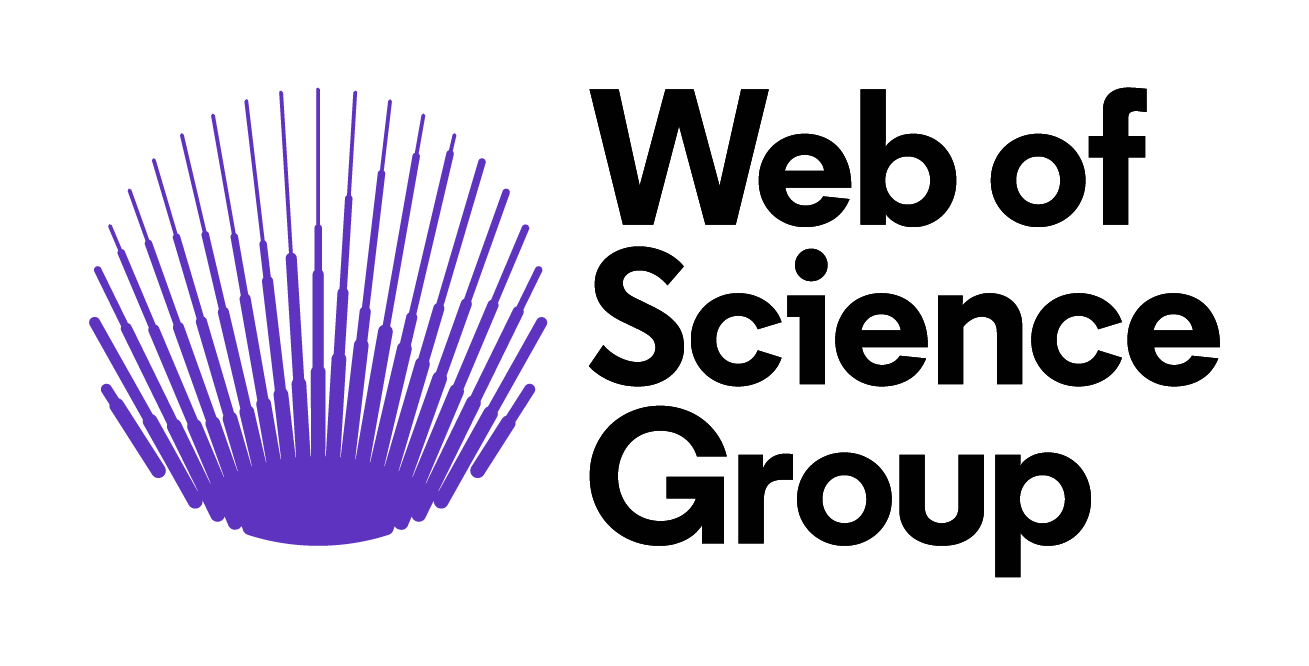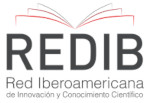Analyzing the Errors of STEM Students in Solving Basic Calculus Problems
DOI:
https://doi.org/10.48017/dj.v10i1.3310Keywords:
error analysis, problem-solving, Basic Calculus, STEM, qualitativeAbstract
Students commit errors in solving mathematical problems. The study aimed to determine the errors encountered in solving problems on Basic Calculus by the STEM students of a Senior High School in a University in Northern Philippines. An error analysis based on the problem-solving in Basic Calculus was done. The instrument used in gathering the data in the study was a ten-item problem-solving researcher-made test validated by experts. The design used in the study was descriptive qualitative design. The errors committed by students were categorized as careless errors, conceptual errors, encoding errors, and unfamiliarity errors. In addition, the most numbered error was on conceptual errors particularly violation of the Power Rule. Based on thematic analysis, the difficulties that lead to their errors include confusion on concepts, process and formula, forgot the concepts, difficulty in memorization, poor application, poor understanding and the complexity of the process.
Metrics
References
Abdullah, A. H., Abidin, N. L. Z., & Ali, M. (2015). Analysis of students’ errors in solving higher order thinking skills (HOTS) problems for the topic of fraction. Asian Social Science, 11(21), 133-142. https://doi.org/10.5539/ass.v11n21p133
Anton, H., Bivens, I. C., & Davis, S. (2021). Calculus. John Wiley & Sons. https://books.google.com.ph/books?hl=en&lr=&id=0FFFEAAAQBAJ
Applerouth, J. (2011). The myth of the careless error. Applerouth. https://www.applerouth.com/blog/the-myth-of-the-careless-error
B. Collins, J., Harsy, A., Hart, J., Haymaker, K. A., Hoofnagle, A. M., Kuyper Janssen, M., & O'Shaughnessy, J. (2019). Mastery-based testing in undergraduate mathematics courses. PRIMUS, 29(5), 441-460. https://doi.org/10.1080/10511970.2018.1488317
Barnett, M. D., Sonnert, G., & Sadler, P. M. (2014). Productive and ineffective efforts: How student effort in high school mathematics relates to college calculus success. International Journal of Mathematical Education in Science and Technology, 45(7), 996-1020. https://doi.org/10.1080/0020739X.2014.902131
Bowling, N. A., Huang, J. L., Bragg, C. B., Khazon, S., Liu, M., & Blackmore, C. E. (2016). Who cares and who is careless? Insufficient effort responding as a reflection of respondent personality. Journal of Personality and Social Psychology, 111(2), 218-229. https://doi.org/10.1037/pspp0000085
Brandt, C. F., Bassoi, T. S., & Baccon, A. L. P. (2016). Difficulties of 6th grade elementary school students in solving the four basic fundamental operations: Addition, subtraction, multiplication, and division of natural numbers. Creative Education, 7(13), 1820. https://doi.org/10.4236/ce.2016.713185
Cayabyab, M. L. V. (2016). Error analysis in the use of simplex method in determining the optimal solution in linear programming. International Journal of Scientific and Research Publications, 6(6). https://www.ijsrp.org/research-paper-0616.php?rp=P545508
Cicekci, M. A., & Sadik, F. (2019). Teachers' and students' opinions about students' attention problems during the lesson. Journal of Education and Learning, 8(6), 15-30.
Desfitri, R. (2016, February). In-service teachers’ understanding of the concept of limits and derivatives and the way they deliver the concepts to their high school students. Journal of Physics: Conference Series, 693(1), 012016. https://doi.org/10.1088/1742-6596/693/1/012016
Domondon, C. S., Pardo, C. G., & Rin, E. T. (2022). Analysis of difficulties of students in learning calculus. Science International (Lahore, 34(6), 1-4. http://www.sciint.com/pdf/638066898447788849.pdf
Domondon, C., Corpuz, M. J., Carranza, M., Moroki, I., Ching, F., & Elipane, L. (2024). Lesson study reflections: Enhancing ratio and proportion instruction in a Philippine school setting. Diversitas Journal, 9(1_Special). https://doi.org/10.48017/dj.v9i1_Special.2834
Egodawatte, G., & Stoilescu, D. (2015). Grade 11 students' interconnected use of conceptual knowledge, procedural skills, and strategic competence in algebra: A mixed method study of error analysis. European Journal of Science and Mathematics Education, 3(3), 289-305.
Fatimah, S., & Yerizon. (2019). Analysis of difficulty learning calculus subject for mathematical education students. International Journal of Scientific & Technology Research, 8, 80-84. https://www.semanticscholar.org/paper/Analysis-Of-Difficulty-Learning-Calculus-Subject-Fatimah-Yerizon/f0738e9700a86b18c05c2113a5cd39708d282117
Galangco, J. (2023). Path model of mathematics achievement in senior high school. Journal of Research in Mathematics Education, 12(3), 246-264. https://doi.org/10.17583/redimat.12759
Galangco, J., Riboroso, R., & Domondon, C. (2024). Development and validation of a precalculus learning package. Diversitas Journal, 9(4). https://doi.org/10.48017/dj.v9i4.3201
Gutmann, B. (2019). Tools for underprepared students in engineering physics with a focus on online mastery learning exercises (Doctoral dissertation). University of Illinois at Urbana-Champaign. https://www.ideals.illinois.edu/items/112767
Hakala, M. (2019). Investigating the relationship of EFL learners' willingness to communicate and learner identity: A case study (Master's thesis). Oulu University. https://oulurepo.oulu.fi/bitstream/handle/10024/12659/nbnfioulu-201905031587.pdf
Harr, N., Eichler, A., & Renkl, A. (2015). Integrated learning: Ways of fostering the applicability of teachers' pedagogical and psychological knowledge. Frontiers in Psychology, 6, 738. https://doi.org/10.3389/fpsyg.2015.00738
Hashemi, N., Abu, M. S., Kashefi, H. & Rahimi, K. (2014). Undergraduate Students’ Difficulties in Conceptual Understanding of Derivation. Procedia- Social and Behavioral Sciences, 143. https://doi.org/10.1016/j.sbspro.2014.07.495
Hashemi, N., Abu, M. S., Kashefi, H., Mokhtar, M., & Rahimi, K. (2015). Designing learning strategy to improve undergraduate students’ problem solving in derivatives and integrals: A conceptual framework. Eurasia Journal of Mathematics, Science and Technology Education, 11(2), 227-238. https://doi.org/10.12973/eurasia.2015.1318a
Kashefi, H., Ismail, Z., & Yusof, Y. M. (2011). Students' difficulties in multivariable calculus through mathematical thinking approach. Journal of Edupres, 1. https://eprints.utm.my/14994/1/JOE-1-2011-011.pdf
Kingsdorf, F. & Krawec, J. (2014). Error Analysis of Mathematical Word Problem Solving Across Students with and without Learning Disabilities. Learning Disabilities Research and Practice 29 (2). https://doi.org/10.1111/ldrp.12029
Kohen, Z., & Nitzan-Tamar, O. (2022). Contextual mathematical modelling: Problem-solving characterization and feasibility. Education Sciences, 12(7), 454. https://doi.org/10.3390/educsci12070454
Kurudirek, A., Karim, B., Sarhang, D., & Tulqin, S. (2025). Math misconceptions: Mistakes, misunderstanding, and confusion. Educenter: Jurnal Ilmiah Pendidikan, 4(1), 16-25.
Lai, C.F. (2012). Error Analysis in Mathematics. Behavior Research and Teaching. University of Oregon. https://files.eric.ed.gov/fulltext/ED572252.pdf
Mak, A. (2018). 4 reasons students don’t pay attention in class: Why & how. StrengthsAsia. https://strengthsasia.com/pay-attention-in-class/
Makgakga, S., & Maknakwa, E. G. (2016, October). Exploring learners’ difficulties in solving grade 12 differential calculus: A case study of one secondary school in Polokwane district. In Proceedings: Towards Effective Teaching and Meaningful Learning in Mathematics, Science and Technology. ISTE International Conference on Mathematics, Science and Technology Education (pp. 23-28). http://hdl.handle.net/10500/22899
Metcalfe, J. (2017). Learning from errors. Annual Review of Psychology, 68(1), 465-489. https://doi.org/10.1146/annurev-psych-010416-044022
Mulwa, E. C. (2015). Difficulties Encountered by Students in the Learning and Usage of Mathematical Terminology: A Critical Literature Review. Journal of Education and Practice, 6(13), 27-37. https://files.eric.ed.gov/fulltext/EJ1080447.pdf
Nyumba, T. O., Wilson, K., Derrick, C. J., & Mukherjee, N. (2018). The use of focus group discussion methodology: Insights from two decades of application in conservation. Methods in Ecology and Evolution, 9(1). https://doi.org/10.1111/2041-210X.12860
OCadiz, M. (2017) Common problems of Students in mathematics. http://classroom.synonym.com/common-problems-stdents-mathematics-19834.html//
Oxford Learning (2019). Why So Many Students Hate Math (And How To Fix It). https://www.oxfordlearning.com/why-kids-hate-math-how-to-help/
Particle, P. (2017). Why people hate maths and how to fix it. https://phys.org/news/2017-10-people-maths.html
Peter, E. E. (2012). Critical Thinking: Essence for Teaching Mathematics and Mathematics Problem Solving Skills. African Journal of Mathematics and Computer Science Research, 5 (3). https://doi.org/10.5897/AJMCSR11.161
Peterson, D. (2018). How Can I Stop Making Careless Mitakes? The Math Doctors. Astra WordPress Theme. https://www.themathdoctors.org/how-can-i-stop-making-careless-mistakes//
Pia, K. F. (2015). Barriers in Teaching Learning Process of Mathematics at Secondary Level: A Quest for Quality Improvement. American Journal of Educational Research, 3(7), 822-831. https://pubs.sciepub.com/education/3/7/5/
Priyani, H. A., & Ekawati, R. (2018). Error analysis of mathematical problems on TIMSS: A case of Indonesian secondary students. In IOP Conference Series: Materials Science and Engineering (Vol. 296, No. 1, p. 012010). IOP Publishing. https://iopscience.iop.org/article/10.1088/1757-899X/296/1/012010/pdf
Rabanal, G.C., & Domondon, C.S. (2023). Learning Experiences of Students in a General Education Course in Mathematics. Journal for Educators, Teachers and Trainers, 14(1). 42-49. https://doi.org/10.47750/jett.2023.14.01.004
Rini, W., Syaharuddin, S., Fadail, Z. M., Domondon, C., Mahde, S. S., & Abdillah, A. (2024). The Dynamics of Traditional Knowledge in the Context of Ethnomatematics: A Literatur Review. In Proceeding of International Seminar On Student Research In Education, Science, and Technology (Vol. 1, pp. 572-580). https://journal.ummat.ac.id/index.php/issrectec/article/view/22384
Rohmah, M. & Sutiarso, S. (2017). Analysis Problem Solving in Mathematical Using Theory Newman. Lampung University, Indonesia. EURASIA Journal of Mathematics, Science and Technology Education. https://doi.org/10.12973/ejmste/80630
Ruef, J. (2018). Think you’re bad at math? You may suffer from ‘math trauma’. Retrieved from https://www/google.com.ph/amp/s/theconversation.com/amp/think-youre-bad-at-math-you-may-suffer-from-math-trauma-104209
Sekaryanti, R., Cholily, Y. M., Darmayanti, R., Rahma, K., & Maryanto, B. P. A. (2022). Analysis of Written Mathematics Communication Skills in Solving Solo Taxonomy Assisted Problems. JEMS: Jurnal Edukasi Matematika Dan Sains, 10(2), 395-403. http://doi.org/10.25273/jems.v10i2.13707
Sun, H., Zhang, Y., Baleanu, D., Chen, W., & Chen, Y. (2018). A new collection of real world applications of fractional calculus in science and engineering. Communications in Nonlinear Science and Numerical Simulation, 64, 213-231. https://doi.org/10.1016/j.cnsns.2018.04.019
Tan Sisman, G., & Aksu, M. (2016). A study on sixth grade students’ misconceptions and errors in spatial measurement: Length, area, and volume. International Journal of Science and Mathematics Education, 14, 1293-1319. https://doi.org/10.1007/s10763-015-9642-5
Thompson, P. W., & Harel, G. (2021). Ideas foundational to calculus learning and their links to students’ difficulties. ZDM–Mathematics Education, 53(3), 507-519. https://doi.org/10.1007/s11858-021-01270-1
Veloo, A. K. H. N., Krishnasamy, H. N., & Wan Abdullah, W. S. (2015). Types of student errors in mathematical symbols, graphs and problem-solving. Asian Social Science, Volume 11, Issue 15, 15 May 2015, Pages 324-334. http://dx.doi.org/10.5539/ass.v11n15p324
Wang, Z., An, S., & Wang, Z. (2018). Error analysis of 8 th graders’ reasoning and proof of congruent triangles in China. Journal of Mathematics Education, 11(2), 85-120.
Waswa, D. W., & Al-Kassab, M. M. (2023). Mathematics Learning Challenges and Difficulties: A Students’ perspective. In Springer proceedings in mathematics & statistics (pp. 311–323). https://doi.org/10.1007/978-981-99-0447-1_27
Why is math so complicated and hard? https://www.reddit.com/r/math/comments/8a66ai/why_is_math_so_complicated_and_hard/
Winterer, E. (2024). Developing productive learning mindsets in a freshman calculus course: An exploratory study (Doctoral dissertation). https://doi.org/10.26153/tsw/53435
Zakariyya, A. A., Beji, A. B., & Itodo, U. (2018). Error analysis of primary six pupils in word Problems involving fractions. Sokoto Educational Review, 18(1), 9-9. https://www.semanticscholar.org/paper/Analysis-Of-Difficulty-Learning-Calculus-Subject-Fatimah-Yerizon/f0738e9700a86b18c05c2113a5cd39708d282117
Downloads
Published
How to Cite
Issue
Section
License
Copyright (c) 2025 Christian Domondon

This work is licensed under a Creative Commons Attribution 4.0 International License.
The Diversitas Journal expresses that the articles are the sole responsibility of the Authors, who are familiar with Brazilian and international legislation.
Articles are peer-reviewed and care should be taken to warn of the possible incidence of plagiarism. However, plagiarism is an indisputable action by the authors.
The violation of copyright is a crime, provided for in article 184 of the Brazilian Penal Code: “Art. 184 Violating copyright and related rights: Penalty - detention, from 3 (three) months to 1 (one) year, or fine. § 1 If the violation consists of total or partial reproduction, for the purpose of direct or indirect profit, by any means or process, of intellectual work, interpretation, performance or phonogram, without the express authorization of the author, the performer, the producer , as the case may be, or whoever represents them: Penalty - imprisonment, from 2 (two) to 4 (four) years, and a fine. ”


















